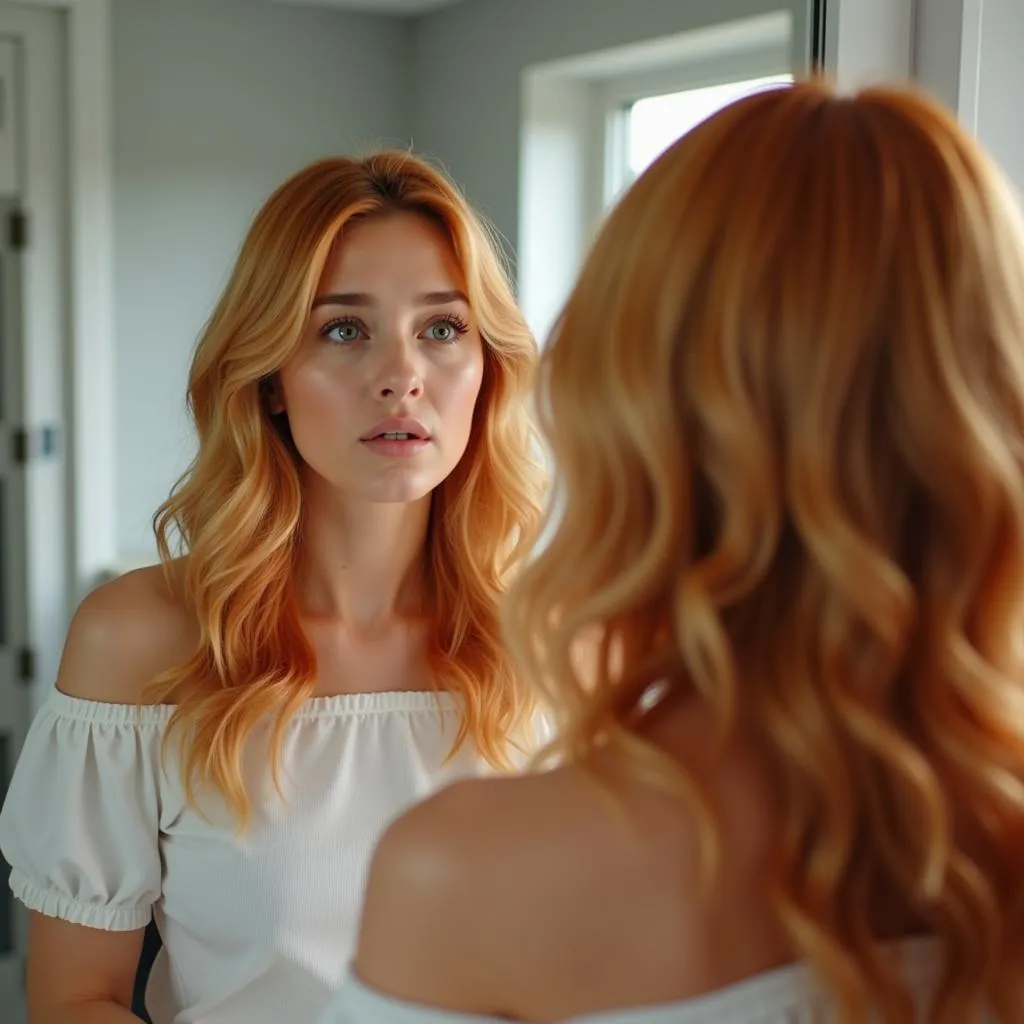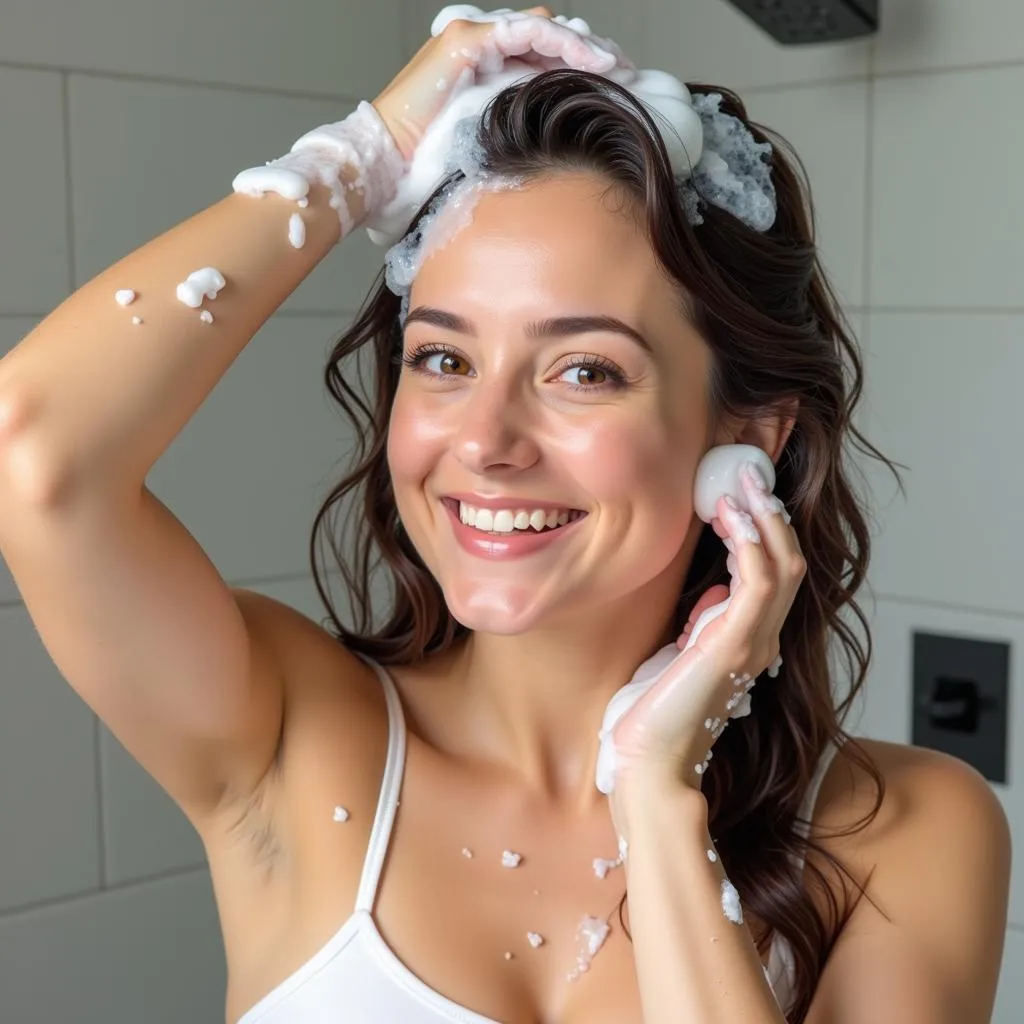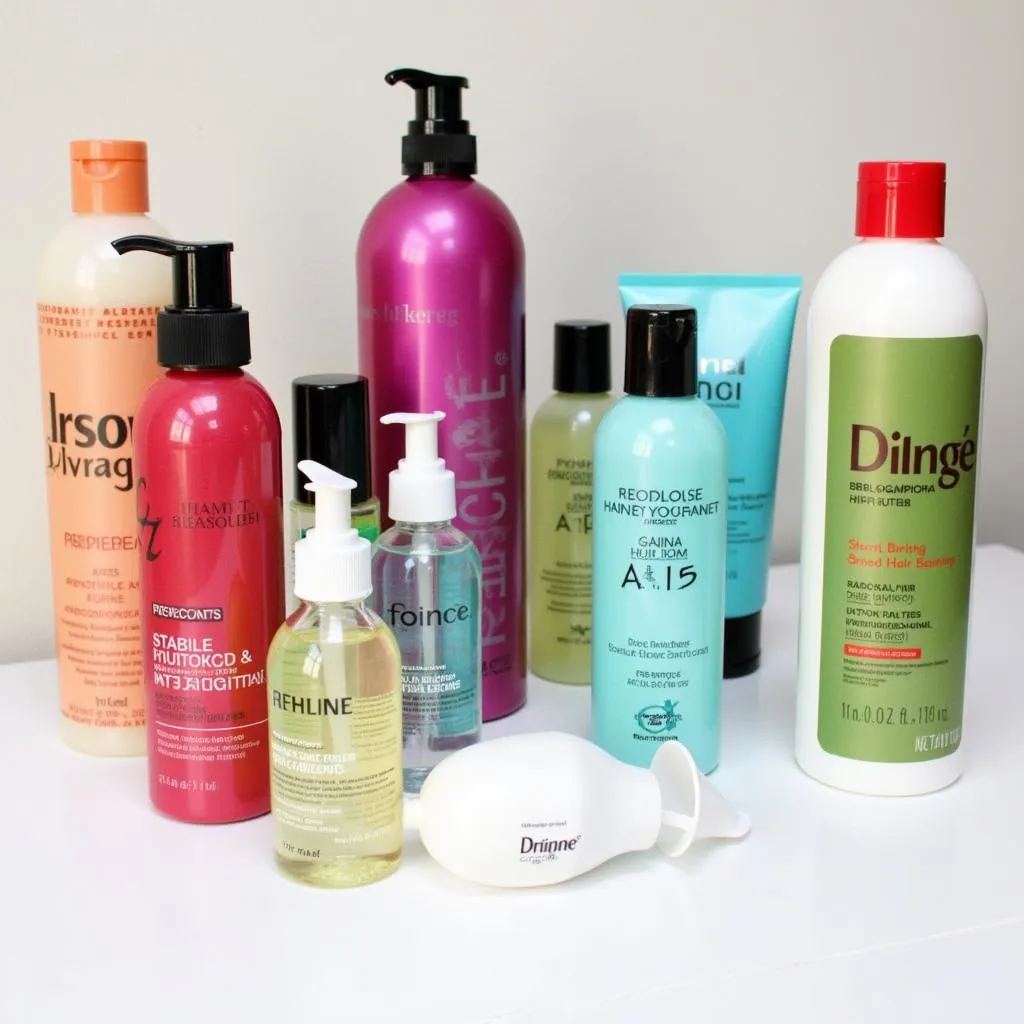Have you ever looked in the mirror and felt like your hair color just wasn’t quite right? Maybe it’s too brassy, too ashy, or just plain dull. Whatever the reason, you’re probably wondering, “How do I get my color back to normal?” Don’t worry – you’re not alone. Many factors can affect hair color, from product buildup to sun exposure.
 Woman with Brassy Hair
Woman with Brassy Hair
Understanding Why Your Hair Color Changed
Before we dive into solutions, it’s important to understand why your hair color might have shifted in the first place. Here are a few common culprits:
- Fading: Over time, hair color naturally fades due to washing, sun exposure, and styling.
- Mineral Buildup: Minerals like iron and copper present in hard water can attach to your hair, leaving it looking dull, brassy, or even greenish.
- Product Buildup: Styling products, especially those with silicones, can build up on the hair shaft, altering how light reflects off your strands and making your color appear distorted.
- Sun Exposure: The sun’s UV rays can bleach and oxidize hair color, leading to fading and unwanted warm tones.
- Chlorine: Frequent dips in chlorinated pools can strip hair of its natural oils and color, resulting in a greenish tint, particularly noticeable in blonde or light brown hair.
How to Get Your Hair Color Back to Normal
Now that you have a better understanding of what might be affecting your hair color, let’s explore some effective solutions:
1. Clarifying Shampoo: Your Secret Weapon
 Woman Washing Hair
Woman Washing Hair
One of the easiest and most effective ways to restore your hair color is by using a clarifying shampoo. Unlike regular shampoos that primarily remove dirt and oil, clarifying shampoos are designed to deep clean your hair and scalp, removing stubborn product buildup and mineral deposits that can dull and distort your color.
Pro Tip: Look for a clarifying shampoo formulated with chelating agents like EDTA, which effectively bind to minerals and remove them from your hair.
2. Toning Treatments: Neutralize Unwanted Tones
Toning treatments are a colorist’s secret weapon for neutralizing unwanted brassiness, yellowing, or orange tones in color-treated hair. These treatments work by depositing small amounts of pigment onto the hair shaft, counteracting unwanted hues.
- Purple Shampoo: Ideal for neutralizing yellow tones in blonde, platinum, or silver hair.
- Blue Shampoo: Helps counteract orange brassiness in brunette hair.
- Toning Glosses: Available at salons or for at-home use, these provide a more intense toning effect and can be customized to target specific unwanted tones.
Pro Tip: Toning treatments can be drying, so always follow up with a moisturizing conditioner to replenish lost moisture.
3. Color-Safe Products: Protect Your Investment
Using hair care products specifically formulated for color-treated hair is crucial for maintaining vibrancy and preventing premature fading. These products are typically sulfate-free, as sulfates can strip hair of its color.
Pro Tip: Look for shampoos and conditioners that contain UV filters to shield your hair from the sun’s damaging rays.
 Hair Care Products
Hair Care Products
4. Home Remedies: Natural Solutions for Subtle Color Correction
For mild color imbalances, several natural ingredients can help restore your hair color to its former glory:
- Apple Cider Vinegar Rinse: Helps remove mineral buildup and balance hair’s pH levels. Mix one part apple cider vinegar with three parts water and pour over hair after shampooing. Leave on for a few minutes, then rinse thoroughly.
- Baking Soda Paste: Creates a gentle exfoliating scrub that can help lift product buildup and impurities. Mix baking soda with a small amount of water to form a paste and apply to damp hair. Massage gently and rinse thoroughly.
Pro Tip: Always perform a strand test before applying any home remedies to your entire head of hair to ensure you’re happy with the results.
When to Seek Professional Help
While the tips above can help address many common hair color concerns, there are times when it’s best to seek professional help from a qualified stylist:
- Significant Color Changes: If you’re looking to make a dramatic change to your hair color, it’s always best to consult with a professional to avoid unwanted results and potential damage.
- Color Correction: Correcting severe color mishaps or unwanted tones often requires the expertise of a trained colorist who can assess your hair’s condition and recommend the best course of action.
Frequently Asked Questions About Hair Color
Can hard water really affect my hair color?
Yes, hard water contains minerals like iron and copper that can attach to your hair and cause it to look dull, brassy, or even greenish.
How often should I use a clarifying shampoo?
It depends on how often you use styling products and your water hardness. For most people, once a week or every other week is sufficient.
Can I use purple shampoo on brown hair?
While purple shampoo is primarily for blonde hair, it can be used on brown hair to neutralize unwanted red or orange tones, but be careful not to overuse it.
How can I protect my hair color from fading in the sun?
Wearing a hat, using hair products with UV protection, and rinsing your hair with cool water after swimming can help prevent sun-induced fading.
What should I do if I hate my new hair color?
Don’t panic! It’s best to consult with a professional stylist as soon as possible. They can assess the situation and recommend the best course of action to correct the color.
Need Help Getting Your Color Back to Normal?
If you’re struggling to restore your hair color or have any other hair-related concerns, don’t hesitate to contact our team of experts. We’re here to help you achieve your hair goals and feel confident in your own skin.
Call us at 0373298888, email us at [email protected], or visit us at 86 Cầu Giấy, Hà Nội. Our dedicated customer support team is available 24/7 to assist you.

